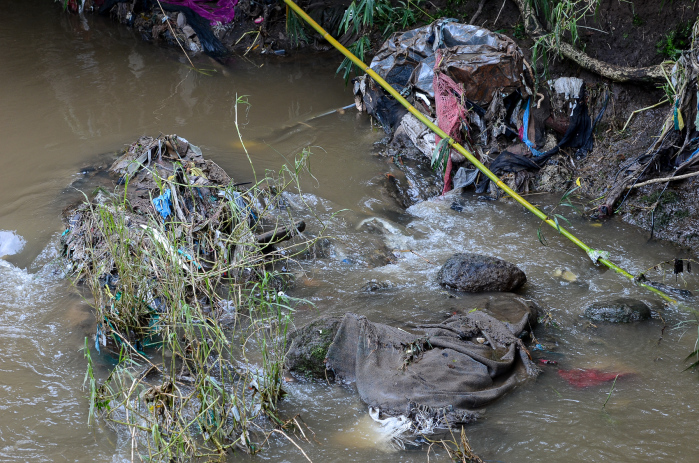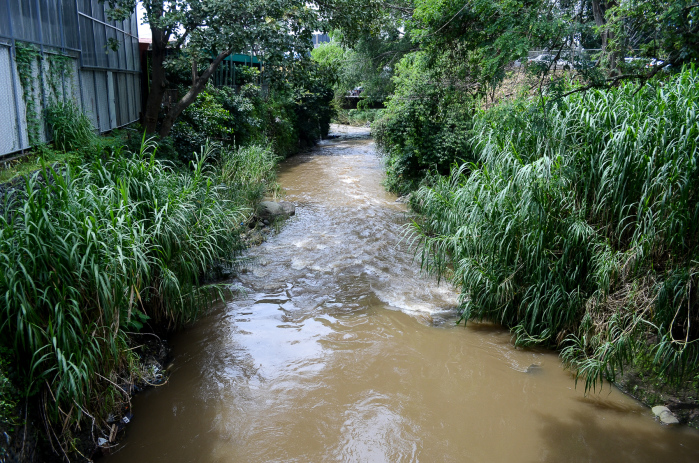The state of Río Torres, which runs through nine cantons in the San José metropolitan area, is deplorable. Not only are fecal matter and trash found in the river, but also toxic substances such as mercury and oil. It’s hard to imagine any living organism surviving in the rushing water, but believe it or not, people still bathe in the river.
This Saturday, a group of San José residents concerned about the river’s pollution will hold the first Festival del Río Torres y Sonrío, sponsored by the Asociación Amigos del Torres Riverwalk Costa Rica. The association hopes to save Río Torres through a public and private alliance.
The source of Río Torres is located in San Rafael de Montes de Oca. The river runs 26 kilometers before emptying into Río Virilla near La Carpio.
Alonso Briceño, an architect and one of the organizers of the river festival, told The Tico Times that the goal of the Asociación Amigos del Torres Riverwalk Costa Rica is to clean up and recover Río Torres as an urban, public space by creating parks along its banks.
“More than anything else, we hope to recover the river and convert it into a collective space for the democratic access of the entire urban population,” said Briceño, also a founder of the initiative Río Urbano.
The idea to organize the association came from Ernesto Arias, director of the University of Costa Rica’s Greater Metropolitan Area Urban Observatory.
“Arias promoted that initial dream that the Río Torres has great potential for urban ecotourism, but we haven’t managed to take advantage [of that potential]. Arias grew up along the river in Barrio Amón,” Briceño said.

This Saturday’s date was selected to mark World Rivers Day, which takes place every year on the last Sunday of September.
Other event sponsors include the Asociación Parque Polideportivo Aranjuez, ChepeCletas, Feria Verde de Aranjuez, FOCUS Taller Arquitectura Experimental, Pausa Urbana and Río Urbano.
The festival will take place around Aranjuez’s well-known Feria Verde, and will include a series of artistic, environmental and recreational activities. Organizers hope to promote awareness among the community about the importance of cleaning up Costa Rica’s polluted urban rivers.
Briceño said the festival includes discussions, children’s workshops, artistic activities and a river walk to clean up trash.
San José municipal officials will hold a discussion about the Inter-Urban Río Torres Corridor. Several artists will create works inspired by a “clean and healthy river,” and there also will be “living art” for participants who want to help create murals.
Volunteers organized by the Asociación Terra Nostra also will clean up trash along the riverbank. Bicycle advocacy group Chepecletas is organizing a bicycle trek that leaves from Parque España, crosses Barrio Amón and then arrives at the old Tournón coffee processing plant, near the Labor Ministry. They then will head to the Mariposario Spirogyra, a butterfly farm in San Francisco de Goicoechea, near the El Pueblo Commercial Center.
“Part of that property [the butterfly farm] conserves an important area of secondary forest. It shows a very different image of what could be for an urban river,” Briceño said.
In San José, it is common to hear stories that describe how residents 50 years ago would swim and fish in Río Torres and other idyllic river pools, such as María Aguilar and El Virilla. Today, all three of those rivers are highly polluted.

Another festival activity is organized by Pausa Urbana and will invite older generations of Costa Ricans to share their memories of the river. Historical photographs of the river will be displayed, and there will be an open mic for anyone wishing to participate.
In November 2012, rafting company Ríos Tropicales, members of Costa Rica’s ecological Blue Flag program, and technicians from the Water and Sewer Institute rafted down the Río Torres in San José, taking water samples along the way.
According to a lab analysis, Río Torres had up to 17 million fecal coliform colonies per 100 mL of water in just a 2-kilometer stretch. A clean river would have less than 1,000, and normal metropolitan rivers have up to 5,000.
A November 2013 air and water quality study by the National University determined that untreated runoff from businesses and homes and untreated sewage are two of the leading causes of pollution in San José’s rivers.
•
What: “Festival del Río Torres Río y Sonrío”
Where: Río Torres, Feria Verde de Aranjuez, Parque Polideportivo Aranjuez, Barrio Aranjuez, Parque España.
When: Saturday, Sept. 27, 7 a.m.-1 p.m.
More Info: https://www.facebook.com/AmigosDelTorres






